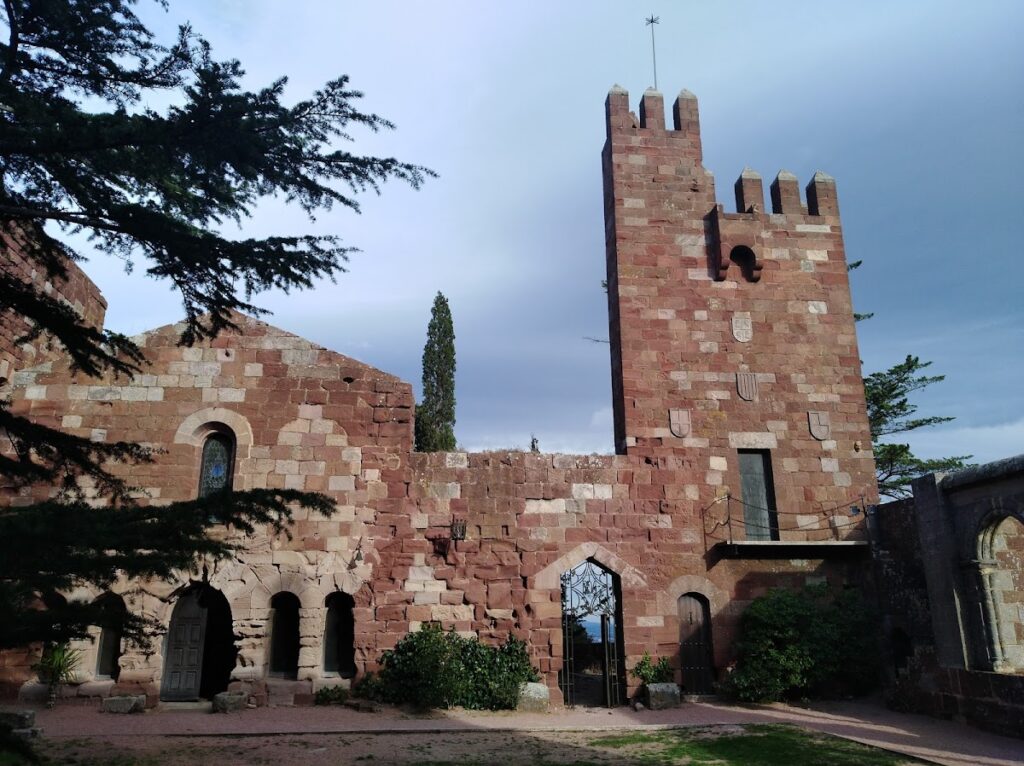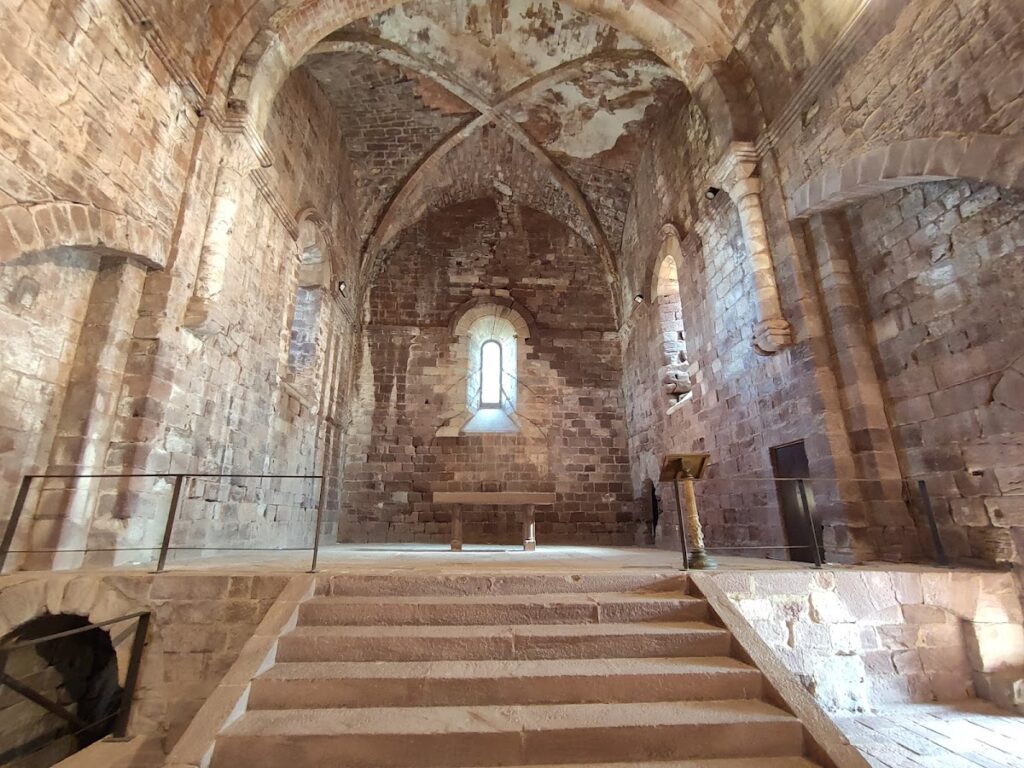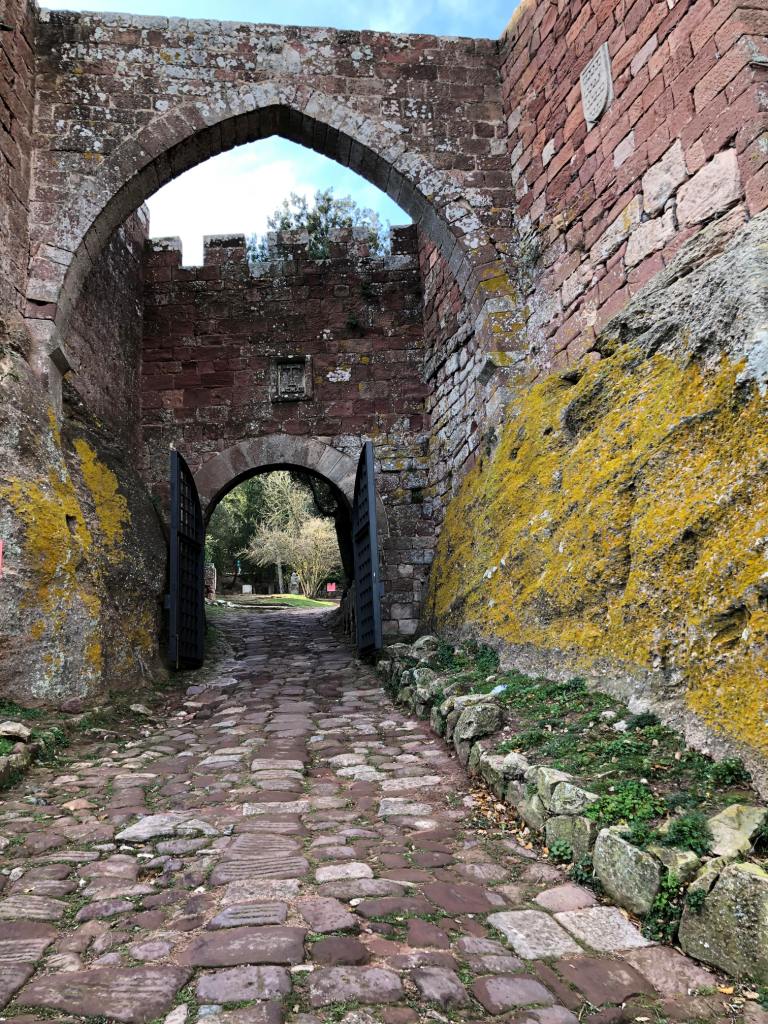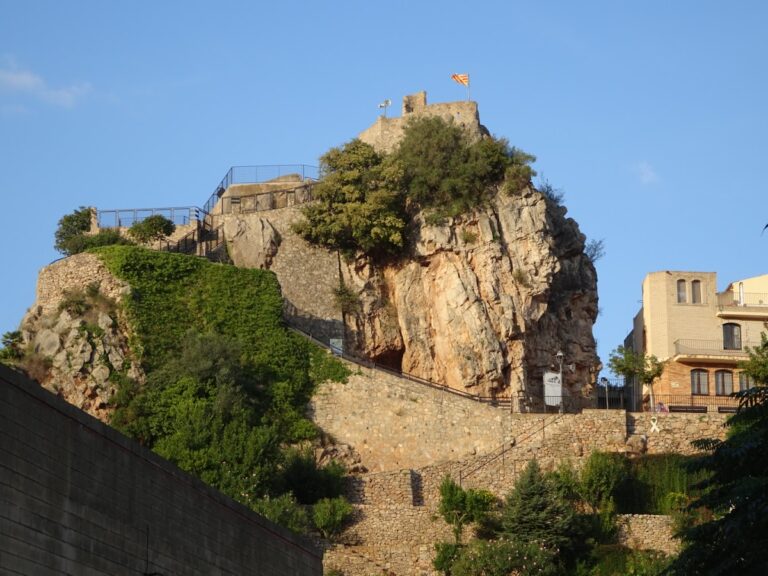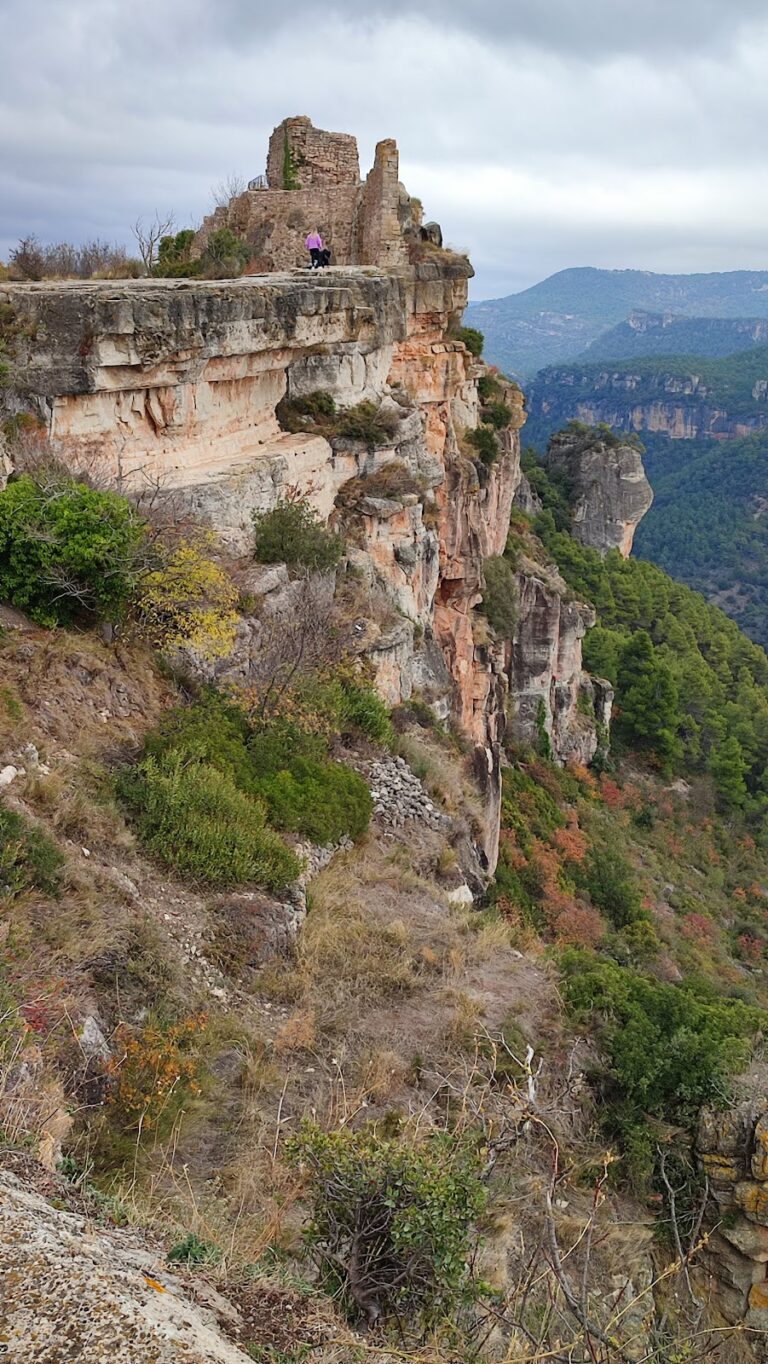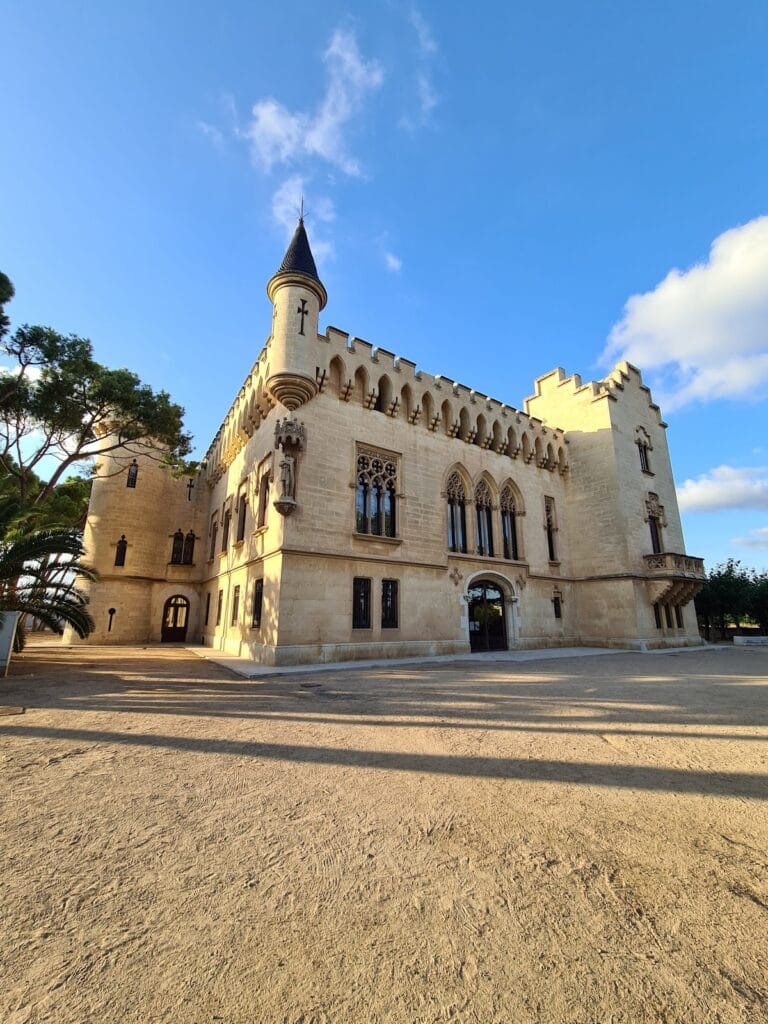Castell d’Escornalbou: A Medieval Castle and Monastery in Riudecanyes, Spain
Visitor Information
Google Rating: 4.4
Popularity: Medium
Google Maps: View on Google Maps
Official Website: patrimoni.gencat.cat
Country: Spain
Civilization: Unclassified
Remains: Military
History
Castell d’Escornalbou is located in the municipality of Riudecanyes, Spain. Its origins date back to the medieval period when the site was part of a frontier between Muslim and Christian territories.
The castle’s earliest known phase began around 1166, when Alfonso I of Aragon granted the ruined fortress, previously under Muslim control, to Joan de Sant Boi. Joan de Sant Boi’s mission was to restore the dilapidated stronghold, establish a church, and found a canonry connected to the Archbishopric of Tarragona. This period saw the simultaneous development of religious and military functions, shaping the site into a fortified monastery where a community of Augustinian canons lived. The church associated with the monastery was consecrated in 1240 by Archbishop Pere d’Albalat.
From the 14th century onward, the site experienced decline and transformation. The monastery was secularized in 1574, ending its role as a canonical residence. Subsequently, Franciscan friars took over in 1580, converting the complex into a seminary that persisted until their expulsion in 1835, a result of the Mendizábal disentailment, a process which dissolved many religious communities and their properties in Spain.
Administratively, the barony of Escornalbou centered on this castle-monastery and governed several nearby villages. It was overseen by a general bailiff who answered to the Archbishop of Tarragona. Throughout its history, the domain witnessed involvement in regional conflicts, siding with royal forces during the Catalan Civil War in the 15th century and supporting the Austrian cause in the early 18th-century War of the Spanish Succession.
The site faced significant damage in the 19th century during both the Napoleonic Wars and the Carlist Wars, suffering partial destruction, including confined explosions and plundering. After the Franciscans were expelled, the castle and monastery were abandoned, briefly exploited for barite mining, and eventually repurposed as a shepherd’s dwelling with associated corral spaces.
In the early 20th century, Eduard Toda acquired the property and undertook extensive restorations. He transformed the structure into an elegant residence adorned with romantic medieval touches and gathered a significant collection of furniture, ceramics, and books, turning the site into a cultural repository. Ownership later passed through private hands and financial institutions until 1983, when the Generalitat and the Diputació de Tarragona jointly acquired it. Following further renovations, the site was adapted for cultural and educational purposes.
Remains
Castell d’Escornalbou presents a combination of medieval fortification and religious architecture, embodying layers of history visible in its preserved structures. The complex notably includes a Romanesque church distinguished by a single nave covered with a barrel vault. The church’s square apse sits above a repurposed Roman tower, which serves as its presbytery area. This medieval church was consecrated in 1240, and a Latin inscription dating to around 1700 adorns the portal’s voussoirs, the wedge-shaped stones forming the arched entrance.
The castle itself incorporates remnants of earlier Roman fortifications, among them a substantial fragment of wall extending approximately one kilometer. This ancient foundation is punctuated by a stone sculpture of a bull’s head, an emblem that connects both to the site’s Roman origins and to its name, Escornalbou, which references the animal in local tradition.
The main entrance portal stands out with a relief featuring a large capital letter T. This symbol represents the Archbishopric of Tarragona and Saint Tecla, its patron saint, rather than later owners such as Eduard Toda. The structures, including this portal and other surviving buildings, are primarily composed of red sandstone, a material common to the region and contributing to the site’s distinctive appearance.
Eduard Toda’s restoration introduced imaginative medieval-style towers and ornamental guardian faces, some believed to have originated in China. One such face is prominently positioned near the manor house entrance. Additionally, Toda transformed the cloister, which had been dismantled, into a panoramic gallery offering sweeping views over the Camp de Tarragona plain. This adaptation reinterpreted the monastic space for modern use while maintaining a connection to its past.
Key architectural elements remain in place, including the cloister and the Romanesque chapter house. The chapter house, once a meeting place for the monastic community, was repurposed as a chapel during the early 20th-century restoration. Beneath the presbytery rests a rectangular crypt that has since been sealed off, hinting at earlier burial or devotional practices.
The manor house preserves period furnishings, ceramics, and the library assembled by Toda, providing insight into the site’s cultural dimension during his ownership. At the highest point stands the hermitage of Santa Bárbara, built in the early 19th century on the ruins of a Roman and later Saracen watchtower. This small chapel offers expansive views of the surrounding Tarragona countryside.
Surrounding the complex, Mediterranean forested areas still flourish, dominated by black pine (Pinus nigra) trees. A rare enclave of small cork oaks (Quercus suber) is also present, likely maintained in the past by the monastic inhabitants for cork harvesting, reflecting a continuity of human-nature interaction tied to the site’s long history.


